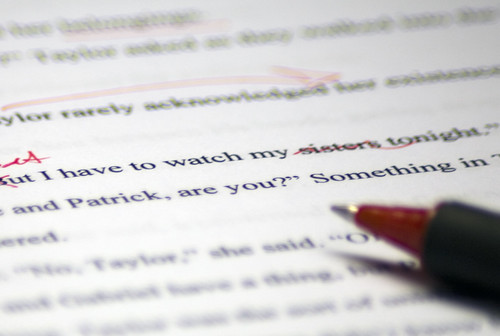by Nicole Eva
University of Lethbridge
Alberta, Canada
I got to talking with a newer professor in our Faculty of Management about issues around open access and the huge profits of the big publishers, and found that she was surprisingly passionate about the subject. I say surprisingly, because often I find faculty members, especially in that particular Faculty, somewhat resistant / unconcerned about the issue. But this particular professor is from a younger generation, having recently completed her PhD, and is not yet totally convinced about the traditional scholarly communications models. As we drove home from a trip our book club had taken, we had hours to muse about the state of academic publishing and the unfairness of it all.
Then she said something shocking, at least to me: “Those publishers should be paying us for peer review”. But the more we talked, the more she had me on board; sure, writing the articles is part of our job, but the reviews we are also expected to perform for free? Those are often seen as over and above, certainly not counting nearly as heavily towards one’s tenure & promotion package but often time consuming and, at least for some, undertaken quite painstakingly and conscientiously. I argued that the ‘good’ guys, those truly open access publications which are operating at a break-even level, wouldn’t be able to afford that; but I couldn’t deny that charging the Big Five a hefty fee for at least some of the free labour we provide as academics would be incredibly satisfying. We fleshed out the idea, devising a scheme in which universities would administer the funds on behalf of their researchers; the funds would go towards the cost of research (RAs, equipment, etc) rather than being paid directly to reviewers, and a portion of it would be held back in a central fund to ‘reimburse’ those who were reviewing for non-profit, open access journals. We got ourselves so worked up about the issue that we decided right then and there to write a blog-post/style article about it, and within hours of getting home she’d sent me an outline of the arguments we’d use.
We did write the article; it’s currently being reviewed by one editor and we hope to get confirmation of publication this month. [Editor’s note: the article has been published and can be found at University Affairs.] But as I floated the idea past my colleagues, I was met with several objections, most of which were philosophical. I get it – the idea of monetizing any element of publication seems inherently wrong. But as long as we are stuck in a world in which some people (read: publishers) are getting rich off of the free labour of others (read: academics), shouldn’t we try to balance the tables at least a little bit? Another objection was that publishers would simply raise the prices of their subscriptions to compensate for their increased expenses. We countered this by calling for government intervention on subscription prices, much the way they currently cap the price of pharmaceuticals. We also noted that this harebrained idea would only work if everyone, worldwide, insisted on payment for their reviews – as soon as someone caves and does it for free, the system falls apart.
So do I think it will work? Not really. I’m sure it’s just another of the many, many ideas out there about how to transform academic publishing that won’t pan out. And in the process, it will probably raise the ire of many a librarian. But what I loved about this collaboration was that another academic – not a librarian, and a business faculty member to boot – cared as much about the unfairness of it all as I, a librarian, did. And I loved the idea that we would put this crazy idea* out there and potentially raise the conversation in a wider forum among academics – not just among librarians and other scholarly communication gurus, but among scholars from all disciplines. We intentionally submitted it to general academic, blog-type sites to gain as wide a readership as possible. And if it does nothing more than stir the pot among a larger audience of scholars and make a few of them think twice about feeding the oligopoly, then I will view that as a success.
So what do you think? Will I be outed as a traitor if this thing gets published? Will all librarians think I’m crazy, and shun me at conferences? Or is any idea a good idea if it raises awareness of the broken scholarly communication system?
*To be fair, once we started writing the paper we discovered that others have flirted with paying for peer review, with some success; see https://www.timeshighereducation.com/news/should-academics-be-paid-for-peer-review for examples.
This article gives the views of the author and not necessarily the views the Centre for Evidence Based Library and Information Practice or the University Library, University of Saskatchewan.


